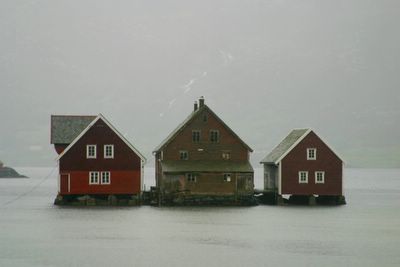It's that time again- the Fair. Out local photo club met (I never saw them) at the Fair to catch some moments. The Fair is an interesting mix of professional showmen and local contributors - farmers, photographers, artist, etc.
28 October 2005
14 October 2005
Fixing photos using Picasa
Most of the photos we take can be improved. Sometimes the light was difficult, too far away, accidents such as crooked picture, etc. All of these fixes can be made relatively easily in Picasa. It is by no means a full photo editor, but if your pictures as close to original intent, Picasa can do wonders. In the majority of cases some minor nudging can make the difference between a good and a great picture. There will always be cases where more flexibility and power is required, well then there is Photoshop. But the convenience of being able to fix 95% of you pictures in your album is valuable.
The following is an example where I was forced to make compromises because of shooting conditions. I could have taken the risk of moving closer or used longer exposure, but chances of success would have dropped dramatically. The compromises made were not completely reversible, but close. A blurry bird or no bird at all would be irreversible.
BTW, this pelican was in bad shape. It had a fish hook in the soft part of its beak and the fishing line was twisted around its feet. It was sitting still, but looked scared and weak. The photo was taken at Joe Patti's seafood in Pensacola, Florida.

Original image. It is way underexposed and not zoomed in enough. These were real constraints when taking the picture. The wounded pelican was nervous, so I could not get close too it. I was using a 28-135 mm lens. It was also quite dark and I had no tripod. Even though the lens is Image stabilized, I could not risk any longer exposure (1/60). That could have resulted in a blurry image if the bird moved.

Sharpen. This last step brings out more details in the bird. The sharpening on this camera, Canon D60, is set to soft by default, so are most other Digital SLR. Sharpening is destructive and a step you want to perform at the end. In most cases I perform sharpening at print time. Many print program sharpens the temporary print file and the original if left unchanged.
07 October 2005
Donkey and Montain Lions
Somebody sent me pictures of a Mule attacking a Mountain Lion, here is a link. I do not know if this is true, but I had a similar experience on a trip to the highlands of
The rest of the Show photos
Here is the remainder of the photos that was on exhibition at the Power of Photography show in

Gullfoss, Iceland
03 October 2005
Canon 5D, some thoughts
Some cameras warrant more attention than others. When the Canon D30 came out, it was a breakthrough in performance. It was the first time a CMOS chip was used in or associated with a high quality camera. CMOS chips had mostly been used in low end imaging devices. The image quality was revolutionary for a $3000 digital camera. This opened up new possibilities for using this camera in professional work where very few if any camera had the usability and quality of this camera. See the initial review from Luminous Landscape.
Canon 5D has some improvement worth noting, but they are not by any means as revolutionary as the D30 was when it came out. The 5D has a full frame sensor, the main point here is the price. It already has two older brothers with full frame CMOS censors, the IDs and IDs Mark II. Size is the other advantage. Its size is much more similar to the 20D that its 1Ds brothers. The rest of the specifications indicate few incremental changes from the Canon EOS 20D.
With the full frame sensor there are a lot more real estate. Since the 5D or all full frame censors are about 2.5 times bigger than sensor in the 20D, we could expect cameras with 20 MP in not too long. Since noise was not a problem in the 20D, pixel count could be increased further.
For now, for those who have been waiting for a lower cost full frame camera, its here.




















